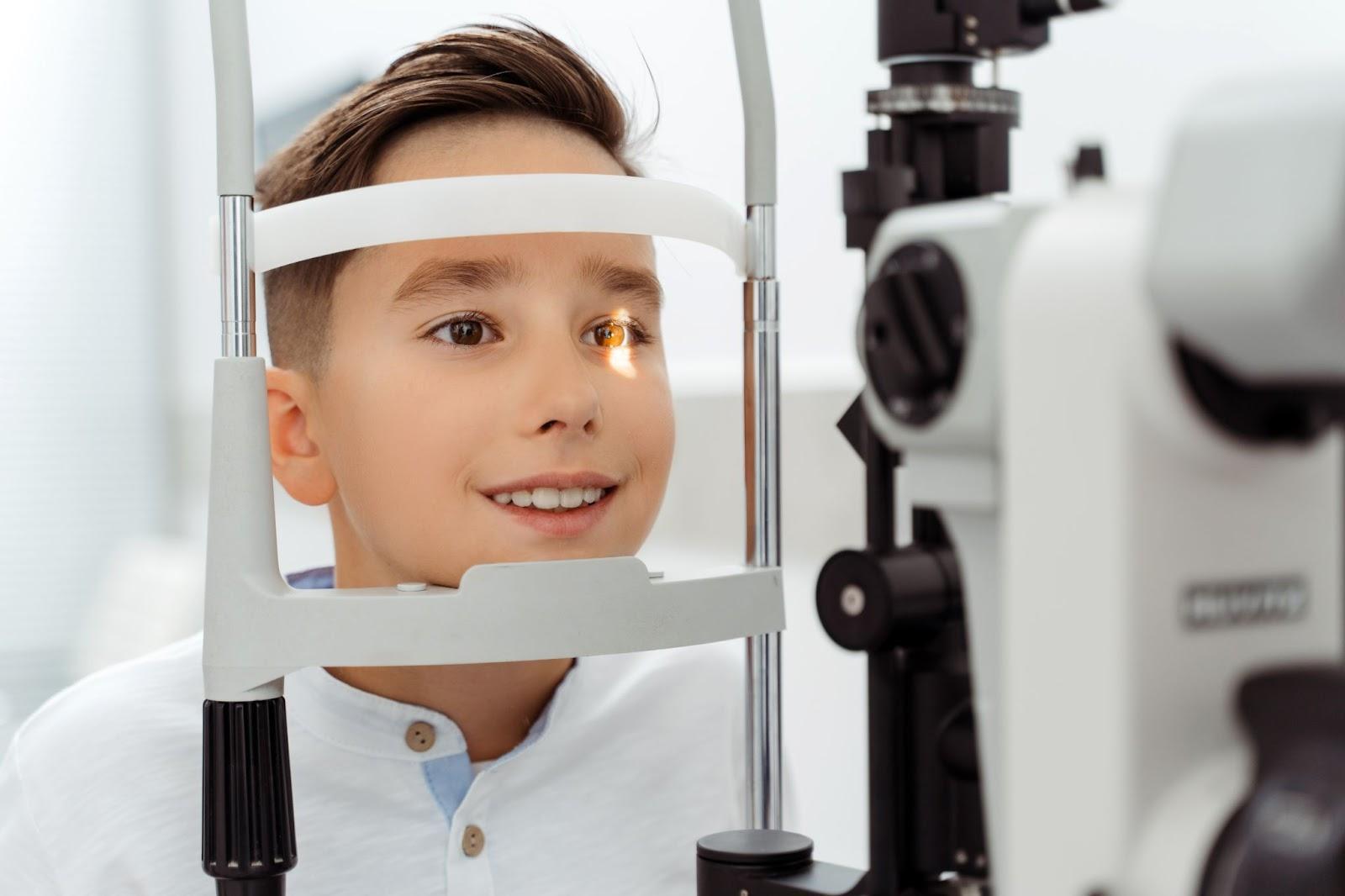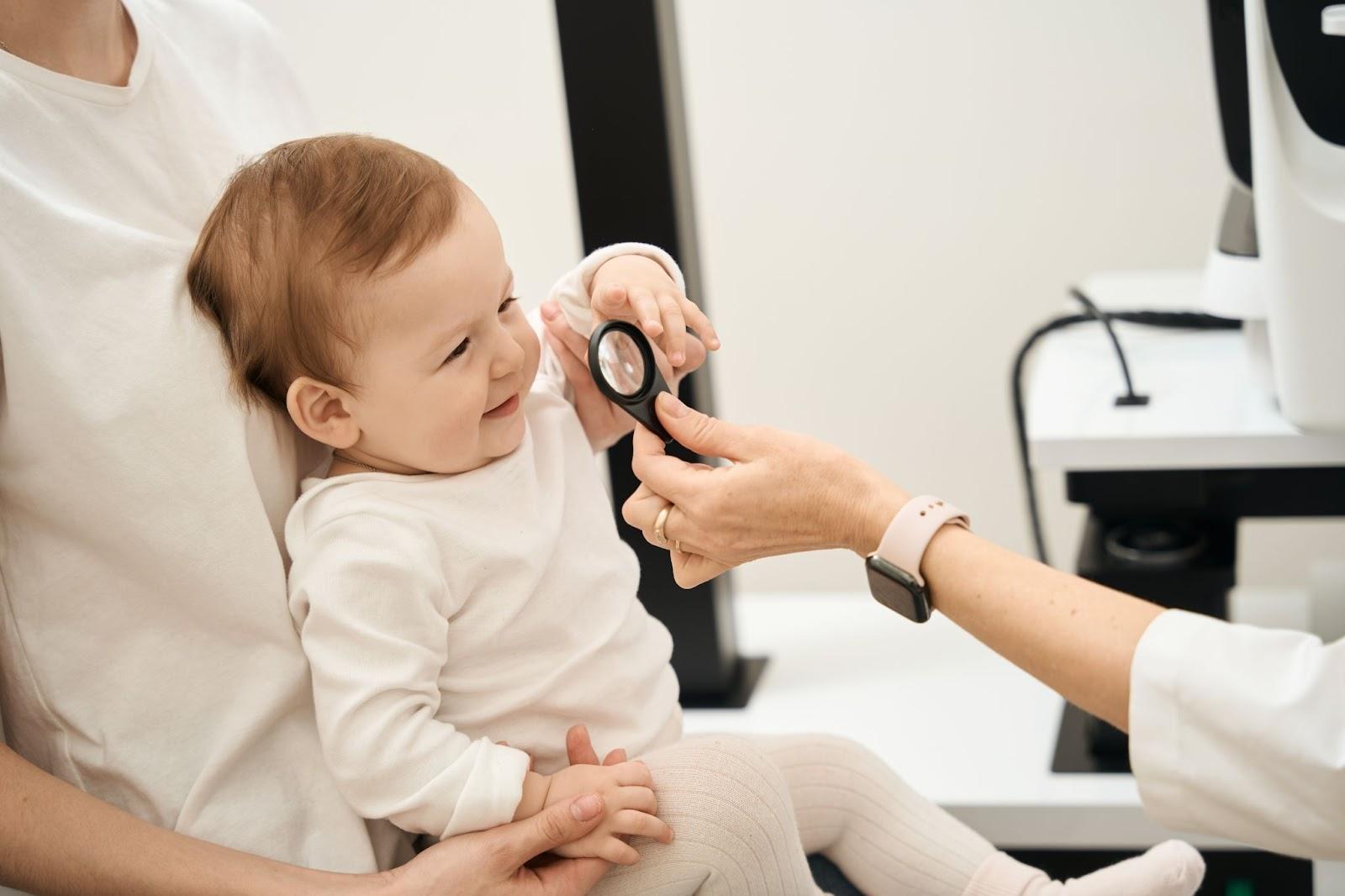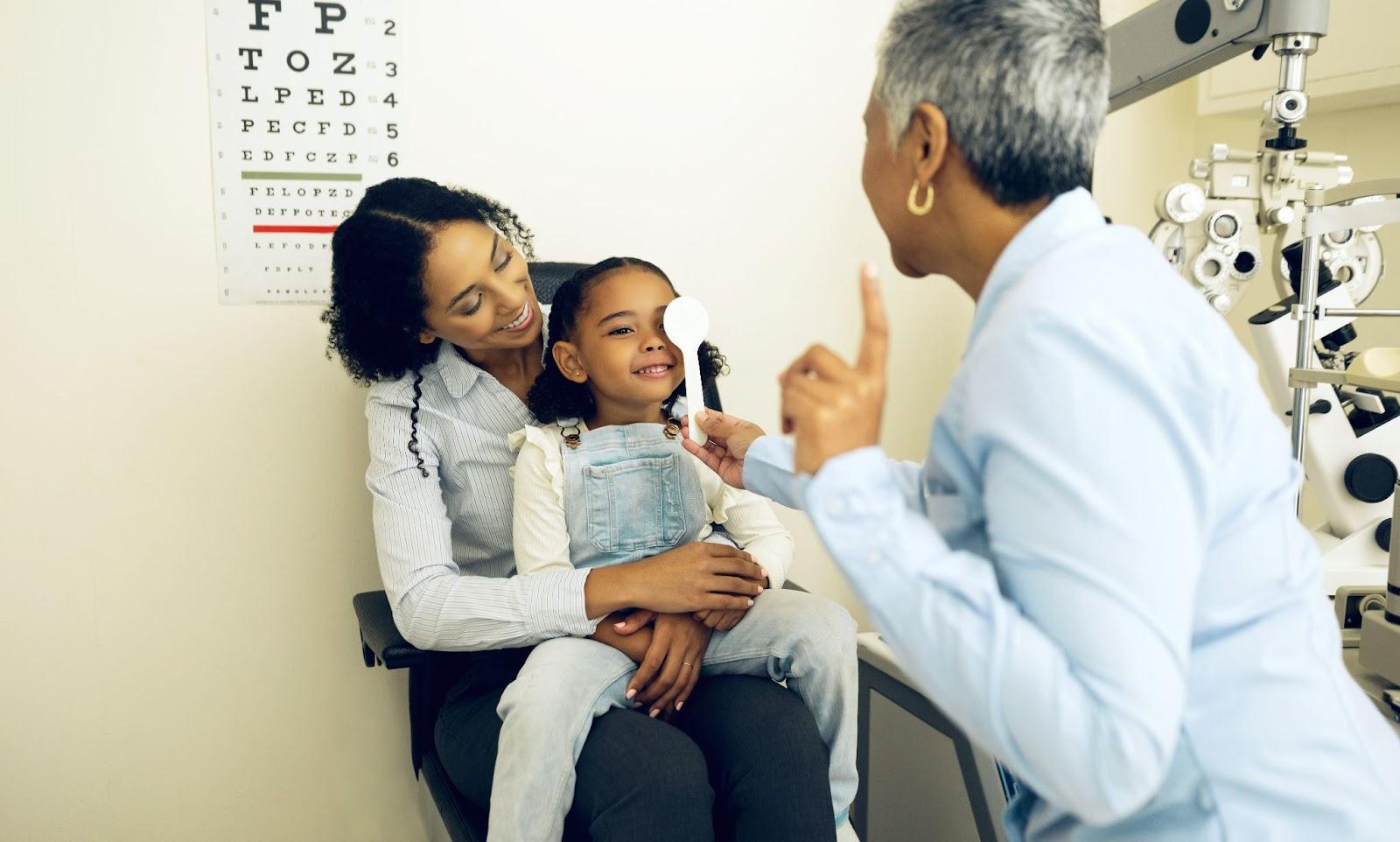Early detection of vision issues can have a profound impact on a child’s overall development. This guide focuses on eye care for kids in Toronto, providing essential advice for scheduling eye exams and choosing the right pediatric optometrist.
Our goal is to empower parents with the knowledge they need to proactively manage their children’s eye health. Together, we can ensure your kids have the visual skills they need to thrive.
Why Early Eye Exams Are Crucial For Kids
Could your child have a vision problem you can’t see? Early eye exams provide answers.
They can identify conditions such as strabismus (eye misalignment), amblyopia (lazy eye), and various refractive errors (like myopia or hyperopia), which are pivotal in a child’s visual development.
In addition:
1 – Vision health significantly influences educational and social experiences. Problems like uncorrected vision can hinder a child’s ability to effectively participate in school, impacting their learning and social interactions.
2 – Regular comprehensive eye exams are a must as they ensure children possess the visual skills needed for optimal learning and social interaction, including excellent visual acuity, proper eye coordination, and effective eye teaming skills.
3 – Regular eye exams help monitor visual health, allowing for timely interventions. They are imperative for maintaining the ocular health of school-age children and helping detect signs of vision problems early.
4 – Ensuring children receive eye exams and appropriate care from an optometrist can significantly boost their academic potential and social confidence.
By prioritizing regular eye care, parents can help safeguard their children’s vision and overall well-being, allowing them to reach their full developmental potential both academically and socially.

Understanding Pediatric Eye Exams
To ensure early detection and intervention, pediatric eye exams involve several key steps:
Visual Acuity:
Pediatric eye exams begin with tests to measure how clearly a child sees using eye charts that feature symbols and letters of different sizes, assessing their ability to identify these visuals accurately.
Eye Muscle Control:
The exams include tests like the cover test, where a child covers one eye and focuses on an object. Movement in the uncovered eye can indicate muscle control issues, assessing the eyes’ ability to move together properly.
Depth Perception:
Tests involve using two different images to assess how well a child perceives depth. This can include stereopsis tests to evaluate 3D vision, which is necessary for academic performance and sports.
Hand-Eye Coordination:
This aspect of the exam tests a child’s ability to coordinate their vision with their motor skills, important for daily activities like playing and learning.
Colour Vision:
Through the use of colour plates with hidden numbers or shapes, this test checks a child’s ability to distinguish colours correctly, which impacts their learning and interaction with the world.
When to Book Your Child’s First Eye Exam

Infancy to Preschool:
Children should undergo their first eye exam between six and nine months of age, as recommended by health experts like the Canadian Association of Optometrists. A second evaluation is advised by age three to ensure that depth perception and hand-eye coordination are developing correctly.
Signs for Early Examinations
Be vigilant for symptoms that could signal underlying issues:
- Blurry vision or double vision
- Difficulty tracking objects or poor sense of sight
- Reduced attention span, possibly due to uncorrected vision problems
These signs might necessitate scheduling an eye exam and vision care outside the usual intervals.
Annual Check-Ups
School Age and Beyond:
Starting at age six, it’s required for children to have annual eye exams through their teenage years. This consistency helps monitor their sense of sight and accommodates their changing educational and social environments, ensuring they have the visual resources they need to succeed.
Regular eye exams for children are key not just for detecting vision issues but also for supporting overall developmental health, enabling timely interventions when necessary. This approach ensures that children are equipped with the necessary visual skills as they grow.
Top Tip: Take advantage of OHIP-covered vision exams provided by the Ontario government and your optometrist in Toronto for children up to 19 years old. This program is a great resource for ensuring ongoing eye health as your child grows.
Choosing the Right Eye Doctor
Choosing the right eye doctor is essential for your child’s visual health. In Toronto, consider these specialists:
Pediatric Optometrists: Experts in comprehensive exams, they assess visual acuity and overall eye health, crucial for your child’s visual development.
Ophthalmologists: These doctors treat severe eye diseases and perform surgeries. Opt for a pediatric ophthalmologist for specialized care when needed.
Choosing a Specialist: Select professionals with proven pediatric experience. Look for clinics that are easily accessible and equipped with the latest diagnostic tools to ensure the best care for your child’s eyes. Your optometrist can make a referral to an ophthalmologist or specialist if needed.

Preparing Your Child for an Eye Exam
Ease your child into the idea of an eye exam for children by incorporating creative activities that explain the process. Using child-friendly books or videos can help clarify what happens during the exam, reducing anxiety and making the concept more familiar.
What to Bring for a Smooth Visit
When planning for your child’s eye exam in Toronto, pack a small bag with items such as their favorite toy for comfort, a copy of their medical history, a government health card, and any current prescriptions. This not only helps in keeping them calm but also ensures you’re prepared for any questions the eye doctor might have.
Top Tip: Explore treatment options like contact lenses, a pair of glasses, or myopia control for your child, and remember the importance of follow-up to ensure the best outcomes for their visual health.
In conclusion, prioritizing children’s visual health is paramount for their overall well-being and development. By understanding the importance of regular eye exams, promoting healthy screen habits, and ensuring proper eye protection, we can empower our children to navigate the world with clarity and confidence. Let’s continue to advocate for proactive measures that safeguard their vision for a brighter future ahead.